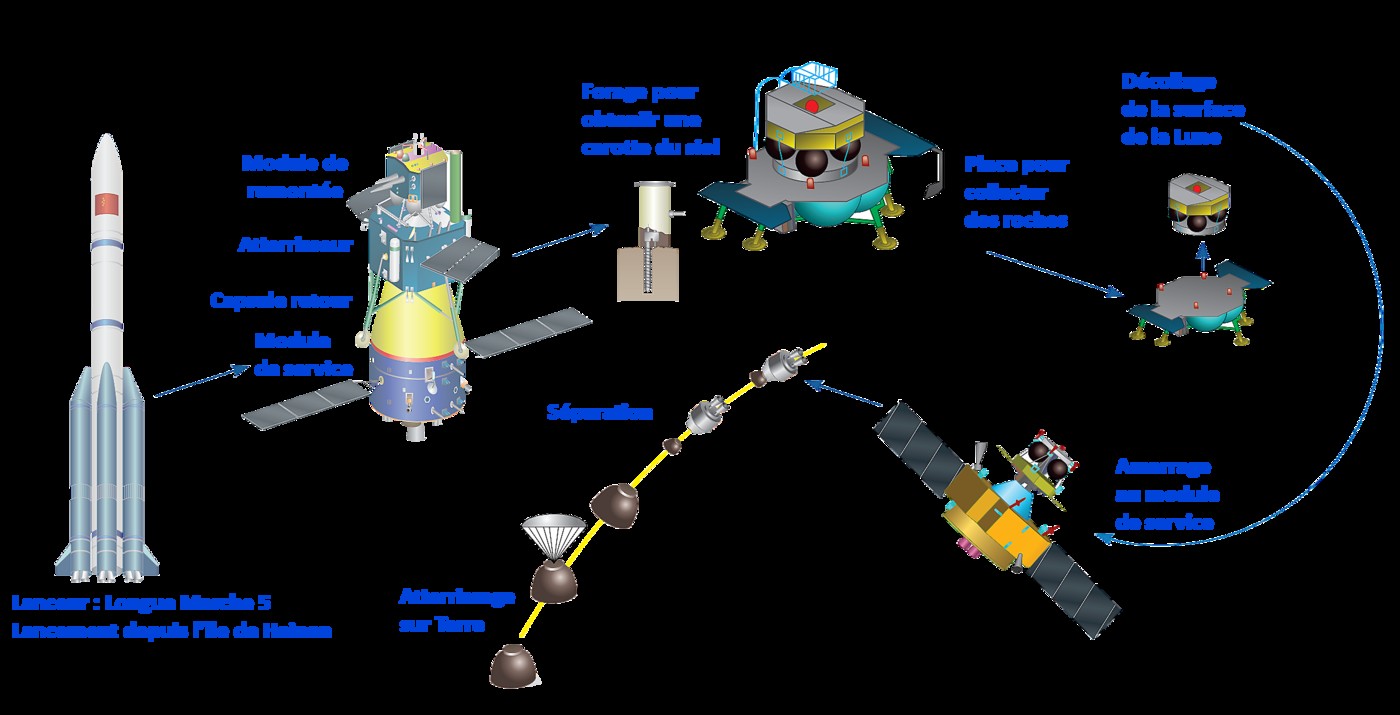China is preparing to launch one of its most ambitious missions, aiming to bring at least two kilos of moon rock back to Earth. The big day is scheduled for next week.
China has made incredible progress in space in recent years. More recently, the Chinese National Space Agency (CNSA) distinguished itself with the launch of its Tianwen-1 mission, heading for the planet Mars. China is also developing its future station – called Tiangong – which will soon succeed the ISS. Without forgetting of course its lunar ambitions.
You did not miss it:China has indeed been evolving since the beginning of 2019 on the far side of the Moon. This unprecedented moon landing will allow us to learn more about the formation of our satellite, but also about the Big Bang. Eventually, the country also aims to be able to send its taikonauts on site, and to install a permanent lunar station.
Finally, the umpteenth objective and not the least, the CNSA intends to bring samples of the Moon back to Earth as part of its Chang'e 5 mission.
The particularly heavy probe (8.2 tonnes) will be launched next week (November 24 or 25) by a Long March 5 rocket, the most powerful current Chinese launcher . This one was transferred this Tuesday, November 17 from its hangar to the nearby launch site of the Wenchang space base, along the coast of the southern island province of Hainan.

The transit phase to the Moon should normally last five days, after which the probe will place itself in orbit. Once inserted, it will release a lander and an ascent module which will land on the surface, in the northwestern part of the Ocean of Storms, the largest of the lunar seas. The Luna 9, Luna 13, Surveyor 1 and Surveyor 3 probes landed there, as did the Apollo 12 human expedition.
From then on, the lander will take care of drilling two meters deep to take samples. Once this sample has been taken (China would like to collect two kilos of rock), the module will take off in order to reach the orbiter and deliver the precious loot to it. Finally, the orbiter will begin the journey back to Earth, before finally dropping its "package" in Inner Mongolia.

Thanks to this mission, Chinese scientists will be able to analyze unpublished Moon samples. The extraction zone is characterized by relatively young volcanic rocks (less than three billion years old), and by high concentrations of KREEP, a material characterized by the abundance of uranium, thorium and potassium.
If China is successful, these will also be the first lunar samples brought back to Earth since the US Apollo program and the Soviet Luna 16 mission. Launched in 1970, this space probe had indeed succeeded, for the first time in history, in collecting a soil sample from another celestial body without human intervention and bringing it back to Earth.